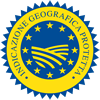Description
The Nocciola del Piemonte PGI or Nocciola Piemonte PGI refers to the hazelnut belonging to the species Corylus avellana L., deriving from the Tonda Gentile Trilobata cultivar, in its shell, shelled, and semi-processed.
Production Area
The production area of Nocciola del Piemonte PGI is within numerous municipalities in the provinces of Alessandria, Asti, Cuneo, Turin, Novara, Biella and Vercelli, in the Piedmont region.
Production Method
The plantation layout and growing systems used are “a cespuglio” (subdivided into shrubs) and, rarely, “monocaule” (single plant). Harvesting, which today is done by machines, must be carried out between the second half of August and September 1st, when the nuts start to fall naturally from the trees. The nuts are gathered numerous times to prevent deterioration and guarantee the quality of the product. The fruit are then left to dry on external tiled floors, with particular attention to protecting them from moisture, or in drying machines in which the conditions of natural drying must be reproduced (continuous drying with tepid air, never above 35 °C). The product is then stored in closed, ventilated areas, where the hazelnuts are arranged in moderately thick layers.
Appearance and Flavour
Nocciola del Piemonte PGI is spherical in shape and non-uniform in size. Its shell is of medium thickness and dull brown, with numerous streaks. The seeds vary in shape (sub-spheroidal, tetrahedral and, at times, ovoid), and have a compact, crunchy consistency; the flavour is delicate and long-lasting. Once roasted, the hazelnut can be easily shelled.
History
The history of hazelnut cultivation in the area where Nocciola del Piemonte PGI is produced, runs parallel with the evolution of the confectionary industry and the discovery of Gianduja chocolate, which is a mixture of hazelnut and cocoa. It all began during the period of Napoleon’s economic blockade on products originating from British industry, including its colonies, when a leading a group of confectioners from Turin began to mix cacao with the cheaper Nocciola Tonda Gentile Trilobata. Later, in 1852, the chocolatier Michele Prochet, who was in business with Caffarel, improved the paste by roasting the hazelnuts and finely grinding them. Professor Emanuele Ferraris was responsible for introducing and popularising hazelnut cultivation in the Alta Langa area, by demonstrating that the hazelnut tree was far more resistant and durable than vines.
Gastronomy
Nocciola del Piemonte PGI should be kept in a cool, ventilated place, in order to avoid rancidity occurring. The nut can be eaten fresh from the tree or after drying. The product is mainly used by the confectionary industry to produce creams, cakes and ice-cream, and in typical Piedmont confectionary products, such as Gianduja chocolate and Christmas nougat, in which the hazelnut is an important and basic ingredient, expressing its characteristics to the full. It is also used chopped for decorative purposes, as well as in numerous savoury dishes.
Marketing
The product is marketed as Nocciola del Piemonte PGI or Nocciola Piemonte PGI. It is sold in its shell, in fabric bags suitable for all markets, and occasionally loose; shelled, semi-processed and processed, in food-grade packaging, only pre-packed or packed. Nocciolo del Piemonte PGI hazelnuts are also available as semi-processed products like chopped hazelnuts, hazelnut flour and hazelnut paste, as well as being the main ingredient in numerous processed products like cream, Gianduja chocolate, hazelnut and white hazelnut spread, truffles, nougat, and many other confectionary products.
Distinctive Features
Nocciola del Piemonte PGI is considered the best hazelnut for industrial use and pairs perfectly with chocolate.




























